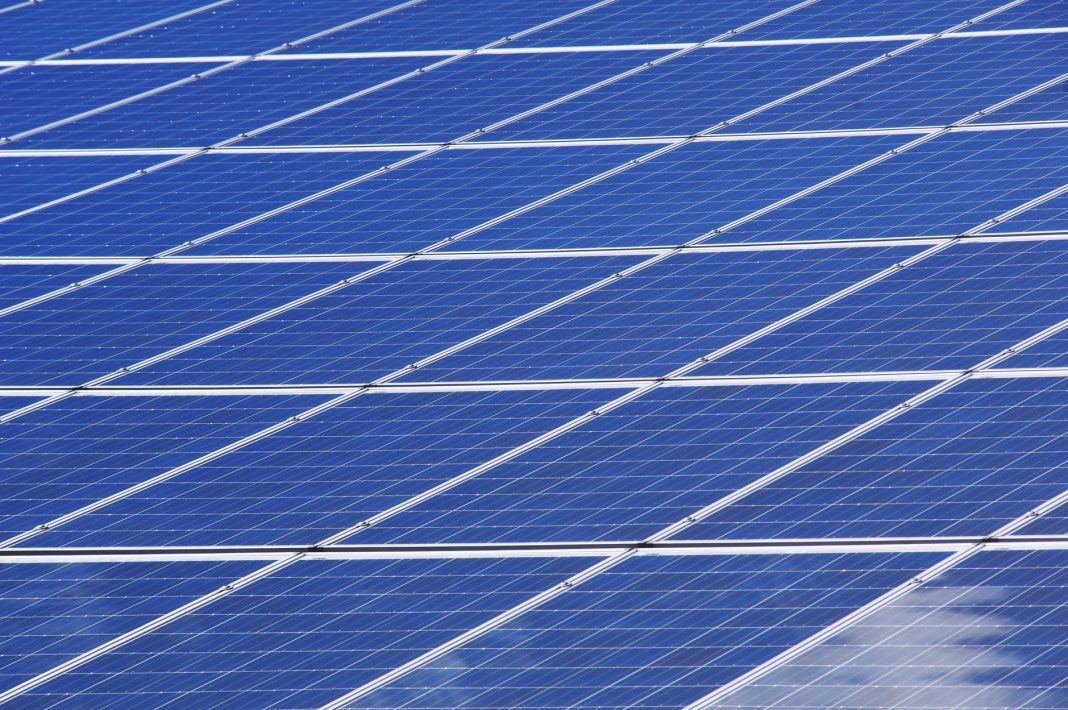 |
|
| Issue #90 • November/December, 2004 |
This article is the fourth and final part of our beginner’s course in solar electricity. Simultaneously we have instituted a Home Energy Information (www.homeenergy.info) section on our website where you can ask questions of Jeff Yago, the author of this series. Yago is a licensed professional engineer and certified energy manager who has written many energy articles for BHM. He has extensive solar thermal and solar photovoltaic system design experience, and is author of Achieving Energy Independence One Step At A Time, which includes many solar system wiring examples. It is available from the Backwoods Home Bookstore or by calling 804-457-9566.
Many people contact me each month and want to power their all-electric four-bedroom home with three or four solar modules.
|
I am going to use Part 4, the final installment of our Solar Power 101 series of articles, to dispel some of these solar array misconceptions, and hopefully make you a more knowledgeable solar consumer.
First, if you want to power a conventional all-electric home with solar modules you can forget it, unless you want to spend what your house cost in the first place. Today’s solar modules can convert 14% to 18% of the solar energy they receive into electricity under ideal conditions. This means the more square-feet of solar array you have, the more power you will generate. However, outdoor temperatures, cloud-cover, site elevation, and shadows from nearby objects will reduce this electrical power output substantially.
After reviewing many popular sizes of modules available from several different manufacturers, I calculated an average nameplate rating of 11 to 12-watts per square foot. Remember, this performance was measured at perfect “solar-noon” conditions using a sun simulator, not the real sun. Since there will be some efficiency losses for less than perfect “real world” conditions, 10-watts per square-foot of roof area is a good “rule-of-thumb” for most areas in North America.
|
Those of you planning a project in sunny southern latitudes can expect better performance than those of you in cloudy northern latitudes, but this will be a good starting point for our discussions.
Basic array sizing
Using the above average peak output of 10-watts per square-foot, this means it will take 100 square-feet of solar array for each kilowatt (kW) of solar output we want. Individual solar modules are now being manufactured with a much higher wattage-per-module to reduce wiring and installation expense. You will want to arrange your array layout using standard size modules, and the actual roof required may be larger than your initial square foot estimate based on wattage. You will want to leave some space between modules to allow for expansion, and between rows for wiring access (refer to the manufacturer installation instructions.)

Table 1 is a sampling of quality higher wattage modules
[available as of October, 2004].
Residential-size solar systems typically have a 24 or 48-volt battery-bank, unless they are grid-tied systems without batteries. Therefore, you should use a module count that is a multiple of two, since most modules have a nominal voltage of 12 or 24-volt. For example, if you wanted to install a solar array in the 2 kW size range, you could install 24 modules at 80-watts each (1,920 watts total), but should not use 25 modules just to make it match a nominal output goal. This will allow equally dividing the voltage and current among other system components, such as array circuit fuses, charge controllers, and wire runs.
For example, if we use Shell Solar Model #SQ80 modules as listed in Table 1, we could install two rows of 12 modules (21 ft. wide x 8 ft. long) or four rows of 6 modules (10.5 ft. wide x 16 ft. long.) Both would take up 168 square-feet of roof area, but one layout may fit the proposed roof space better than the other.
|
A solar module can be mounted in either direction; however, the location of the off-set junction box on the back of a module can affect the length of wire runs between modules.
When selecting the mounting location for your array, keep in mind there should be no shading of any part of the array between 9:00 am and 3:00 pm. A narrow shadow from a nearby chimney partially covering only one module can actually reduce the total array output up to half!
You will receive the highest yearly-total output if the array is on a south facing roof, with a roof slope equal or greater than the latitude for your location. However, we have mounted solar arrays in all orientations from almost due east to due west, and with all roof-mounting angles from vertical to flat, to accommodate unusual local site conditions or design requirements; so don’t panic if your planned location is less than perfect.
Expected system performance
Yes, the sun shines all day, but at the lower sun angles before 9:00 am and after 3:00 pm, the solar array will have a much lower power output. During shorter winter months this “solar day” is even shorter. There are weather tables available giving total sun-hours for most cities in the United States, but if you are looking for a ballpark sun-hour per day value, use 4-hours for winter months, and 6-hours for summer months. Again, those of you in more southern latitudes may exceed these averages, while those of you in more northern latitudes may have fewer peak sun-hours per day, especially during winter months.
|
From our earlier example of a 1,920-watt array, this results in 7.68 kWh/day in the winter (4 hr. x 1,920 watts) and 11.5 kWh/day in the summer (6 hr. x 1,920 watts). Remember, these are manufacture nameplate performance values using sun simulators. Your installation will have a lower output due to the system losses we have already discussed. For most systems and site locations, your actual system useful AC wattage output will be 20 to 30 percent below the module nameplate DC wattage values, even with ideal weather conditions.
Solar module types
In our previous installment, we talked about battery-based inverters and grid-tied inverters that do not use batteries. You can use the same solar modules for both system types, but how the modules are wired together will be different.
Some solar module manufacturers start with a round, single-crystal of silicon that is sliced into very thin wafers. These have electrical conductors plated to each side, and are then sandwiched between a tempered glass front panel and a vacuum sealed plastic or vinyl material backing. This assembly is then mounted in an aluminum frame, which allows easy attachment to mounting racks or a building structure.
|
Other solar module manufacturers start with a “block” of multi-crystalline silicon, which is also sliced into very thin wafers, and follows the same type assembly as the single-crystal module. Since a multi-crystalline material can be cast into larger square blocks than a round single-crystal can be “grown,” a square-shaped solar cell is easier to place close to each adjoining cell, allowing less material waste and more cell surface area per module frame size.
To achieve the same cell density, most round single-crystal cells have each side cut off to create a square shape with rounded corners. This allows the same cell density per module frame-size, but at a higher material waste and cost.
A third cell technology that offers significant manufacturing cost savings is a solar cell that is “plated” onto the back of the glass front, then this silicon material is “cut” into individual cells using a laser. Unfortunately, the wattage-per-square-foot output for this amorphous cell technology is substantially lower than the more conventional modules, so you will need significantly more roof area for the same output. However, since this amorphous module sells for a much lower price-per-module, your actual array cost per watt will be almost the same. As research continues in this area, I am sure these lower efficiencies will increase significantly.
|
Some solar manufacturers are using waste silicon left over from micro-electronics manufacturing processes. These are also excellent modules, since this “scrap” silicon is very high grade to start with.
There are some solar manufacturers mounting solar cells directly onto a metal or vinyl backing without any glass front plate. These modules are for applications subject to physical damage, like the deck of a sailboat or vehicle roof. Some modules are flexible and can be rolled up or tied down to irregular mounting surfaces. These are excellent for portable applications, but are not normally available in higher wattage sizes.
Since it costs millions of dollars to set up a solar cell manufacturing facility, most of the solar module brands you will see in the marketplace today are from large brand name manufacturers and carry excellent product warranties. Some may have a heavier frame than others, and some may have a different size or exterior finish, but they are all very similar. However, you will find that their cost-per-watt and watt-per-square-foot values will be different.
As to which type is better, that is like asking which brand of truck is better. Stay with name brands and solid warranties, and remember, if you do encounter a technical problem or need warranty replacement, that low cost, high volume Internet solar distributor may be long gone when you have a technical problem. Support your local licensed solar dealers and use only licensed electricians for any wiring modifications to your home. Their experience will keep you from making very expensive mistakes.
This concludes our series on Solar Power 101. I hope you now are a wiser solar consumer as you start to plan your own alternative energy system purchase.
[weaver_widget_area id=’articles_about_yago’ class=’text3′]




















